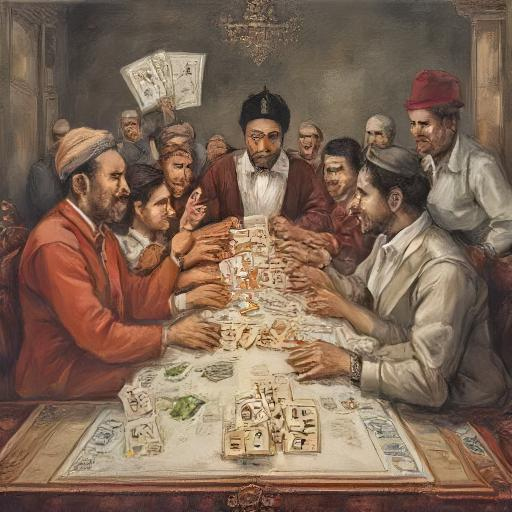Mastering the Rummy 51 game: The Rich History and Strategy of Indian


51gamelottery – Indian Rummy, often referred to simply as Rummy in India, is a beloved card game that has captivated players for generations. Combining elements of skill, strategy, and a touch of luck, Indian Rummy is a game that requires players to think critically and act decisively. This article delves into the rich history of Indian Rummy and explores the strategies that can help you master this fascinating game.
The Rich History of Indian Rummy
Origins and Evolution
Rummy, in its various forms, has a long and storied history that spans continents and centuries. The origins of Rummy are somewhat murky, but it is believed to have evolved from the Mexican card game Conquian, which dates back to the 19th century. Conquian itself is thought to be derived from earlier Spanish card games.
Indian Rummy, a popular variant in India, likely evolved from the version of Rummy called Gin Rummy, which gained immense popularity in the United States in the early 20th century. As the game traveled across borders, it adapted to local cultures and preferences, eventually becoming the Indian Rummy we know today.
Cultural Significance
In India, Rummy is more than just a card game; it is a cultural tradition. The game is often played during festivals and family gatherings, particularly during Diwali. It brings people together, fostering a sense of community and camaraderie. The social aspect of the game is as important as the competitive one, making it a cherished pastime for many.
Understanding the Basics
Objective
The primary objective of Indian Rummy is to form valid sets and sequences from the cards in your hand. A standard game of Indian Rummy is played with two decks of cards, including jokers, making a total of 106 cards. Each player is dealt 13 cards, and the goal is to arrange these cards into valid combinations as quickly as possible.
Key Terms
- Sets: A set consists of three or four cards of the same rank but different suits. For example, 7♥, 7♠, 7♣.
- Sequences: A sequence is a consecutive series of three or more cards of the same suit. For example, 5♠, 6♠, 7♠.
- Pure Sequence: A sequence without any joker. This is crucial for declaring a valid hand.
- Impure Sequence: A sequence that includes a joker.
Game Play
- Dealing: Each player is dealt 13 cards. The remaining cards form the draw pile, with one card placed face-up to start the discard pile.
- Drawing and Discarding: Players take turns drawing a card from either the draw pile or the discard pile and then discarding one card.
- Forming Combinations: Players form sets and sequences with the cards in their hand.
- Declaration: When a player forms valid combinations, including at least one pure sequence, they declare their hand and show their cards.
Strategies for Mastering Indian Rummy
1. Focus on Pure Sequences
Forming a pure sequence should be your top priority. Without a pure sequence, you cannot declare a valid hand. Aim to create this sequence early in the game to reduce the risk of being stuck with high-value cards.
2. Observe and Adapt
Pay close attention to the cards your opponents are picking and discarding. This can give you insights into their strategies and the combinations they are trying to form. Adjust your strategy accordingly to block their progress or to gain an advantage.
3. Manage High-Value Cards
High-value cards (Aces, Kings, Queens, Jacks) can significantly increase your points if you lose. Try to form sets or sequences with these cards early or discard them if they don’t fit into your combinations.
4. Utilize Jokers Wisely
Jokers are versatile and can be used to complete sets and sequences. However, prioritize using jokers in impure sequences rather than pure sequences, as pure sequences cannot include jokers.
5. Keep a Balanced Hand
Aim to keep a balanced hand with a mix of high and low-value cards. This gives you flexibility in forming sets and sequences and reduces the risk of high points if your opponent declares first.
6. Plan Your Moves
Think ahead and plan your moves. Consider the possible combinations you can form with the cards you have and the cards you might draw. Avoid making impulsive decisions and focus on your long-term strategy.
7. Bluff and Deception
In competitive play, bluffing can be an effective strategy. Discarding cards strategically can mislead your opponents about your hand, causing them to make suboptimal decisions.
Conclusion
Indian Rummy is a game that beautifully blends tradition, skill, and strategy


